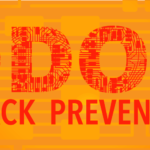Spotify has revolutionized the way we listen to music, and its data-driven features offer unique insights into our listening habits. One of the latest innovations is the Spotify DNA chart, which provides a visual representation of your music preferences, revealing your unique musical identity. This guide will walk you through the steps to access and interpret your Spotify DNA chart.
What is the Spotify DNA Chart?
The Spotify DNA chart is a personalized visualization that represents the traits of your musical taste, breaking down your listening habits into distinct categories. It analyzes various elements such as genre, mood, and artist preferences to create a unique profile of your music personality. Think of it as a musical fingerprint, showcasing your individuality as a listener.
Step-by-Step Guide to Accessing Your Spotify DNA Chart
- Log into Your Spotify Account
- Open the Spotify app on your device or visit the Spotify website.
- Log in using your credentials (email and password or social media login).
- Connect to Spotify Wrapped
- The DNA chart feature is often associated with Spotify Wrapped, which summarizes your yearly listening habits.
- To find your DNA chart, you might need to navigate to the Wrapped section, typically available in early December. However, it’s worth checking periodically, as Spotify occasionally rolls out new features.
- Explore the Spotify Wrapped Page
- Once you’re in the Wrapped section, look for your personalized music insights.
- Scroll through the various features until you find the DNA chart option. It might be labeled as “Your DNA” or something similar.
- View Your DNA Chart
- Click on the DNA chart option to load your personalized visualization.
- The chart will display various aspects of your musical identity, including genre distributions, favorite artists, and moods that define your listening style.
- Share Your DNA Chart
- Spotify encourages users to share their Wrapped experiences on social media.
- You can easily share your DNA chart by clicking the share button, which allows you to post it on platforms like Instagram, Twitter, and Facebook, or send it directly to friends.
Understanding Your Spotify DNA Chart
Once you have your DNA chart in front of you, you may wonder what all the information means. Here are some key aspects to consider:
- Genre Distribution: This section shows the different genres you listen to, indicating your preferences and how they compare to the overall Spotify user base.
- Top Artists: Your most-played artists will be highlighted, giving you an idea of who dominates your playlists and why.
- Listening Moods: Spotify categorizes songs based on their emotional resonance. This feature can reveal whether you prefer upbeat tracks, chill vibes, or something more introspective.
- Comparison to Other Users: Spotify sometimes includes features that allow you to compare your DNA chart with friends or other users, showcasing how your tastes align or differ.
Tips for Getting the Most Out of Your DNA Chart
- Engage with Recommendations: Based on your DNA chart, Spotify may suggest new artists or playlists tailored to your taste. Take advantage of these recommendations to discover new music.
- Create Playlists: Use the insights from your chart to create playlists that reflect your favorite genres and moods. This can enhance your listening experience and introduce variety into your routine.
- Follow New Artists: If your DNA chart highlights artists you haven’t explored yet, consider following them to stay updated on their latest releases.
Conclusion
The Spotify DNA chart is an innovative way to dive deeper into your musical identity, showcasing your unique preferences and tastes. By following the steps outlined above, you can easily access your chart and gain insights that enhance your music listening experience. Whether you choose to share your findings or use them to discover new sounds, your Spotify DNA chart is a valuable tool in understanding and enjoying the music you love. Happy listening!
FAQs About Spotify DNA
1. What is a Spotify DNA Chart?
A Spotify DNA chart is a visual representation of your listening habits on Spotify. It breaks down your musical tastes into categories like genres, artists, and songs, showing the most prominent parts of your music identity. Some charts might also show how your preferences have changed over time or compare your music tastes to others.
2. Does Spotify offer an official DNA chart?
No, Spotify doesn’t offer an official DNA chart feature. Instead, third-party tools analyze your Spotify data and create these charts. Some of the most popular tools for generating Spotify DNA charts are Obscurify, Spotify Pie, and other genre-tracking services.
3. How can I get my Spotify DNA chart?
To get your Spotify DNA chart, you’ll need to use a third-party app. Tools like Obscurify and Spotify Pie allow you to log in with your Spotify account and generate a chart based on your listening history. These apps require your permission to access your Spotify data, but you can always revoke access later.
Also Read: Comprehensive Guide to DDoS Protection with DNSProxy.org
4. Are Spotify DNA charts safe to use?
Yes, Spotify DNA charts are safe to use when created by trusted third-party apps. Spotify uses a secure authentication process called OAuth, which allows you to grant apps access to your data without sharing your password. However, always make sure you’re using reputable websites, and you can revoke access at any time from your Spotify account settings.
5. Do I need a Spotify Premium account to get a DNA chart?
No, you don’t need a Spotify Premium account to generate a DNA chart. Most third-party tools work with both free and premium Spotify accounts since they use your listening data, which is accessible with any account type.
6. What kind of information will I see in a Spotify DNA chart?
Spotify DNA charts typically show:
- Top genres you listen to.
- Favorite artists based on playtime.
- Listening trends over time (such as how your taste has changed).
- Obscurity level—how mainstream or niche your music taste is.
The exact layout and details can vary depending on the tool you use.
7. What is the difference between Spotify Wrapped and a Spotify DNA chart?
- Spotify Wrapped is an official feature provided by Spotify at the end of each year. It summarizes your top artists, songs, genres, and listening statistics from the past 12 months.
- Spotify DNA charts, on the other hand, are more detailed analyses provided by third-party tools, often available year-round. These charts give you a more in-depth look into your musical tastes and can include more complex data such as genre diversity and time trends.
8. How often can I update my Spotify DNA chart?
Since third-party tools typically analyze real-time data from your Spotify account, you can generate a new DNA chart whenever you like. Your chart will update as your listening habits evolve. This means you can check back every few weeks or months to see if your music preferences have shifted.
9. How can I share my Spotify DNA chart on social media?
Most third-party apps offer an easy way to share your Spotify DNA chart on social media platforms. After generating your chart, you can usually download the image or use a direct share button to post it on Instagram, Twitter, Facebook, or other platforms.
10. Can I use multiple Spotify DNA tools?
Yes, you can use multiple tools to analyze your Spotify data. Different tools like Obscurify, Spotify Pie, or Last.fm might present your data in unique ways, offering different insights into your music preferences.
11. What should I do if I no longer want an app to have access to my Spotify data?
You can easily revoke access to any third-party app via Spotify’s account settings:
- Go to your Spotify Account page.
- Navigate to Apps in the sidebar.
- Find the app you want to remove and click Revoke Access.
This will immediately cut off the app’s ability to access your Spotify data.
12. Will using a Spotify DNA chart tool affect my Spotify recommendations?
No, using a third-party tool to generate a DNA chart will not impact your Spotify recommendations or playlists. These tools only read your data, they don’t influence Spotify’s algorithms or change how your account functions.



